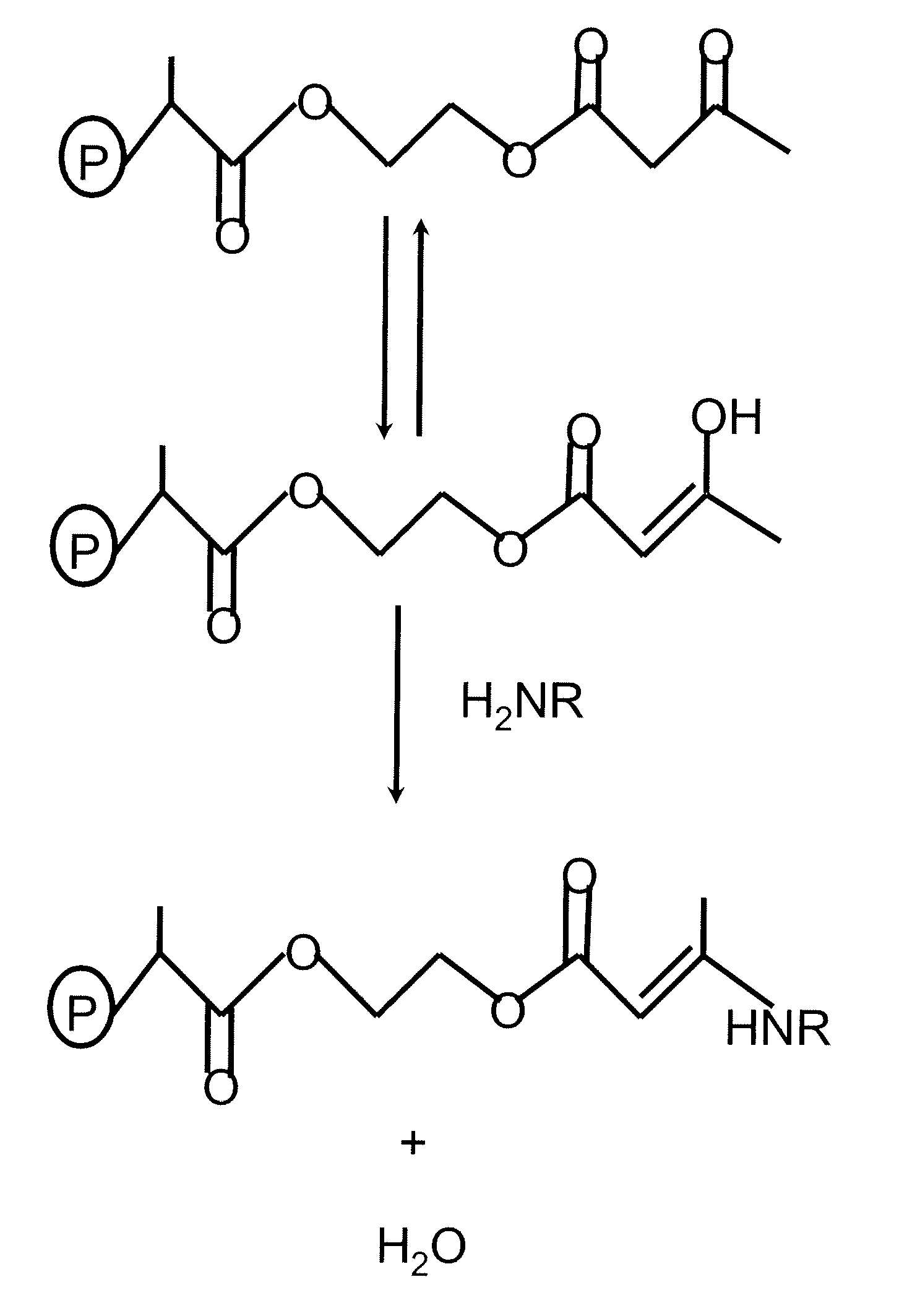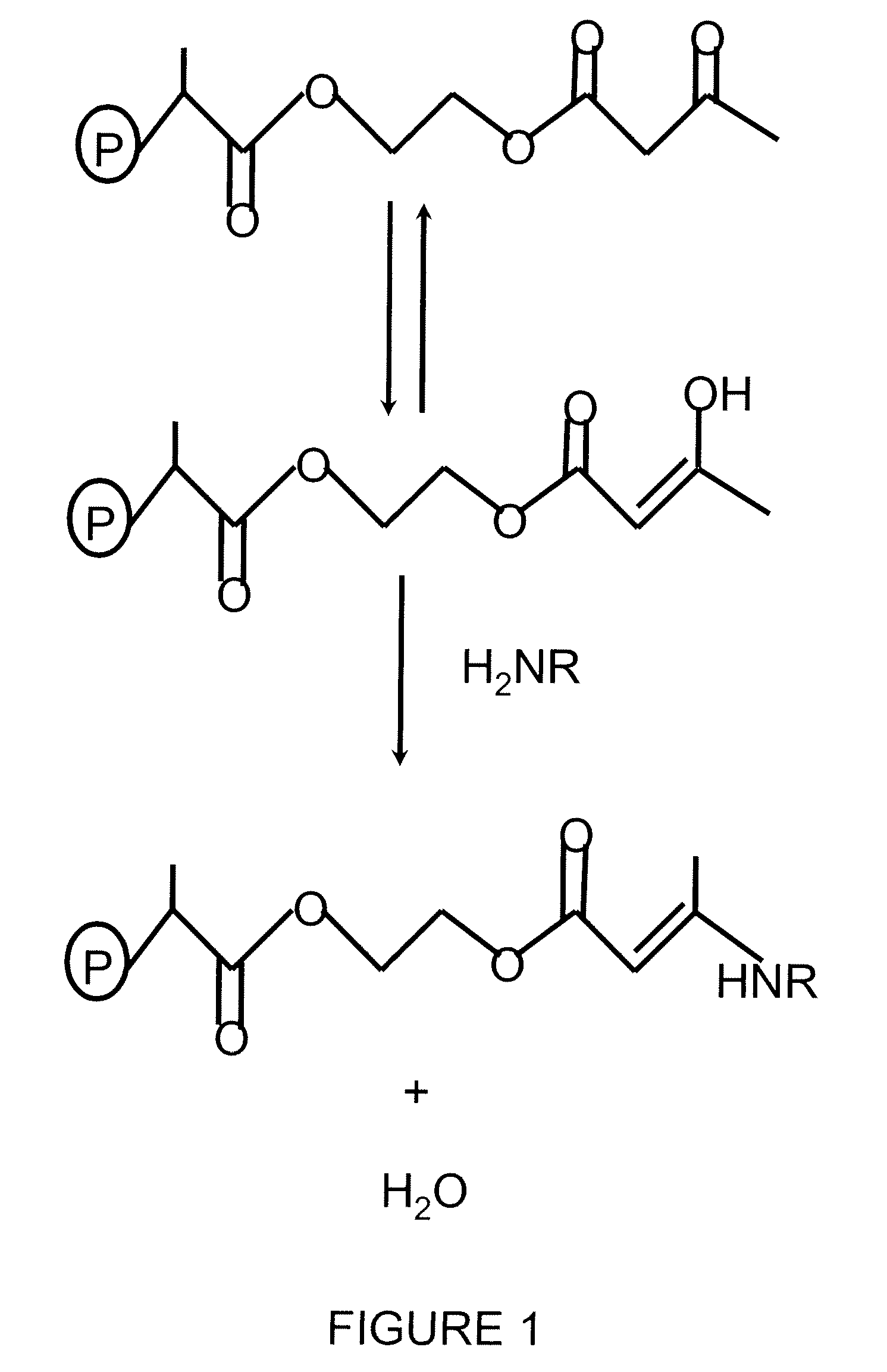Cross linking thin organic coating resins to substrates through polyfunctional bridging molecules
- Summary
- Abstract
- Description
- Claims
- Application Information
AI Technical Summary
Benefits of technology
Problems solved by technology
Method used
Image
Examples
example 1
Thin Organic Coating Resin
A thin organic coating resin was prepared as described below. The resin included as monomers: acetoacetoxyethyl methacrylate (AAEM), n-butyl methacrylate, styrene, methyl methacrylate, 2-ethylhexyl acrylate, and ADD APT PolySurf HP which is a mixture of methacrylated mono and di-phosphate ester. Other sources of phosphate containing monomers that could be used include Ebecryl 168 from Radcure Corporation. The total monomer distribution in the resin was as follows: 20.00% AAEM, 12.50% n-butyl methacrylate, 15.00% styrene, 27.50% methyl methacrylate, 20.00% 2-ethylhexyl acrylate, and 5.00% ADD APT PolySurf HP. The resin polymerization reaction was run under N2 with stirring and a heat set point of 70° C. The initial reactor charge was 241.01 grams of deionized (DI) water, and 2.62 grams of ammonium lauryl sulfate (Rhodapon L-22 EP). The second reactor charge was 2.39 grams of ferrous sulfate 0.5% FeSO47H2O (3 ppm). The two initiator co-feeds were 1.62 grams o...
PUM
| Property | Measurement | Unit |
|---|---|---|
| Percent by mass | aaaaa | aaaaa |
| Percent by mass | aaaaa | aaaaa |
| Time | aaaaa | aaaaa |
Abstract
Description
Claims
Application Information
 Login to View More
Login to View More - R&D
- Intellectual Property
- Life Sciences
- Materials
- Tech Scout
- Unparalleled Data Quality
- Higher Quality Content
- 60% Fewer Hallucinations
Browse by: Latest US Patents, China's latest patents, Technical Efficacy Thesaurus, Application Domain, Technology Topic, Popular Technical Reports.
© 2025 PatSnap. All rights reserved.Legal|Privacy policy|Modern Slavery Act Transparency Statement|Sitemap|About US| Contact US: help@patsnap.com


